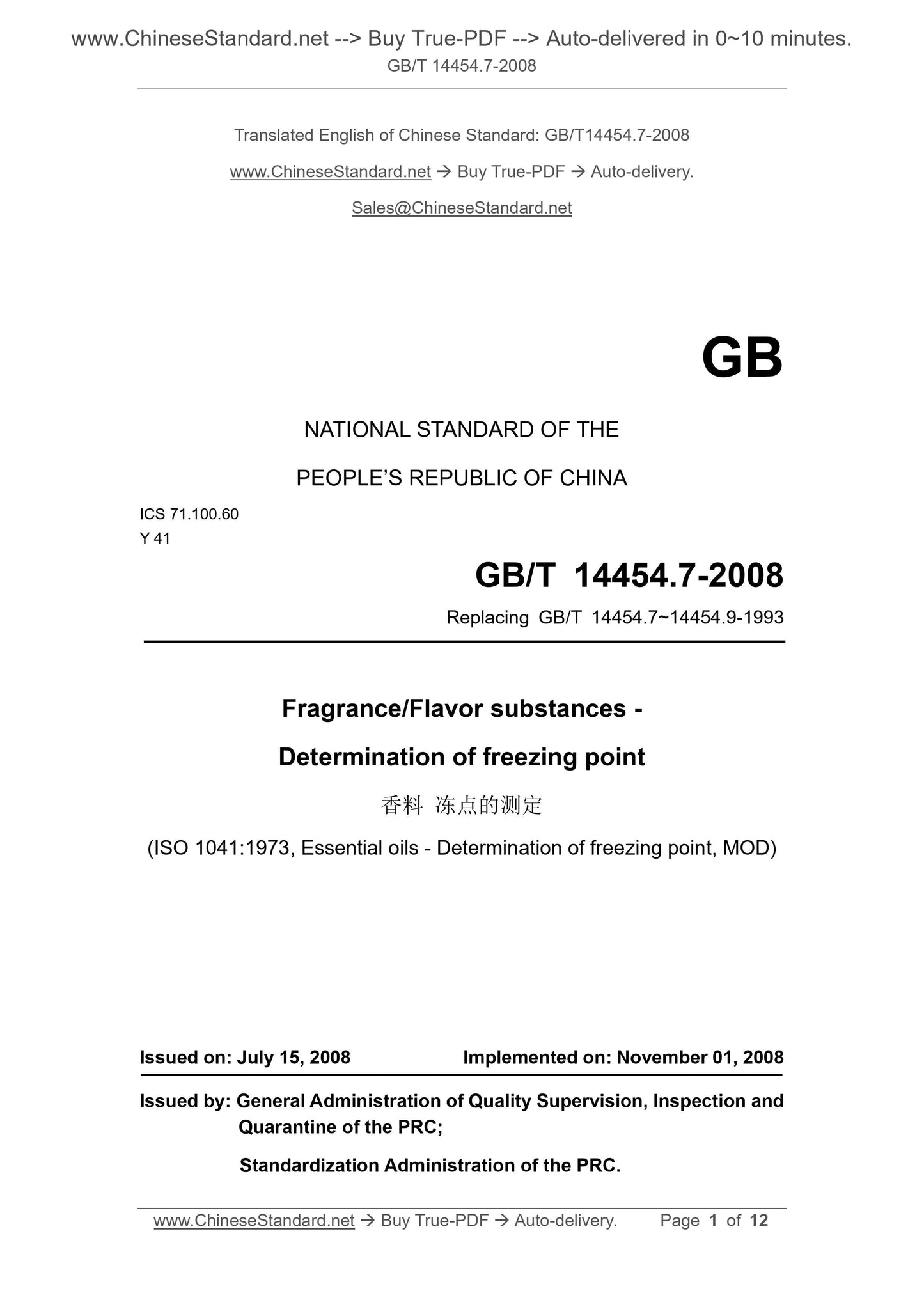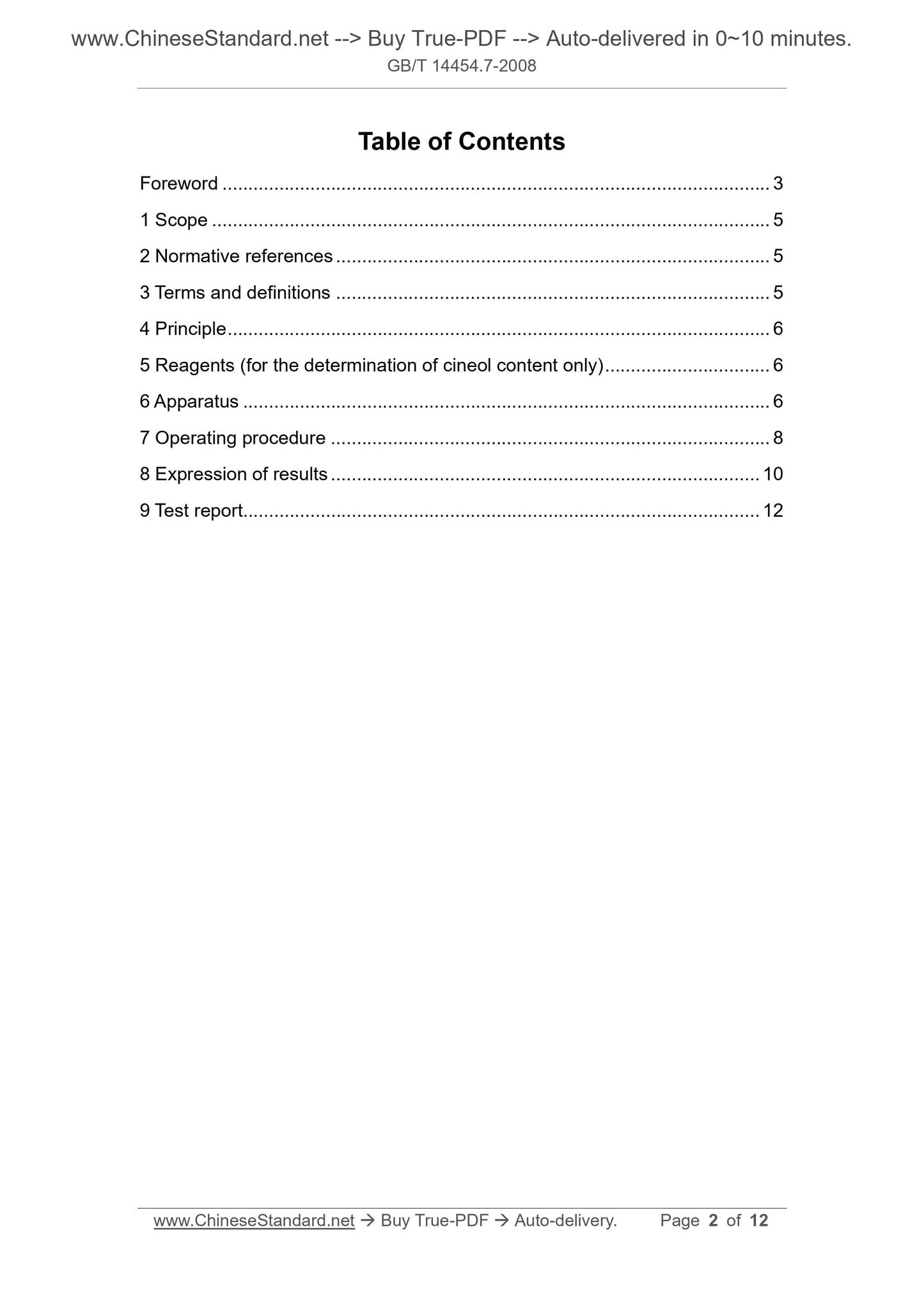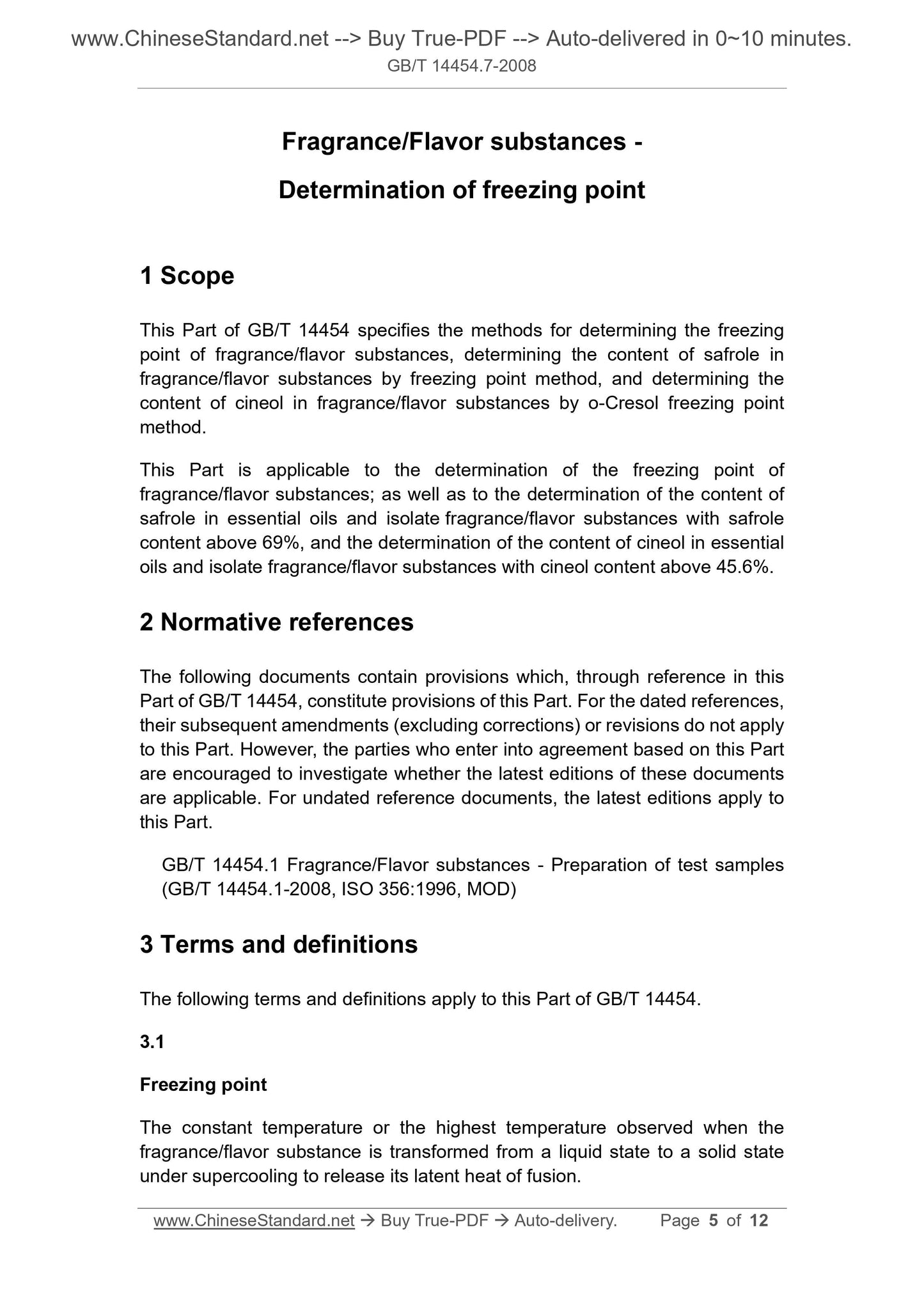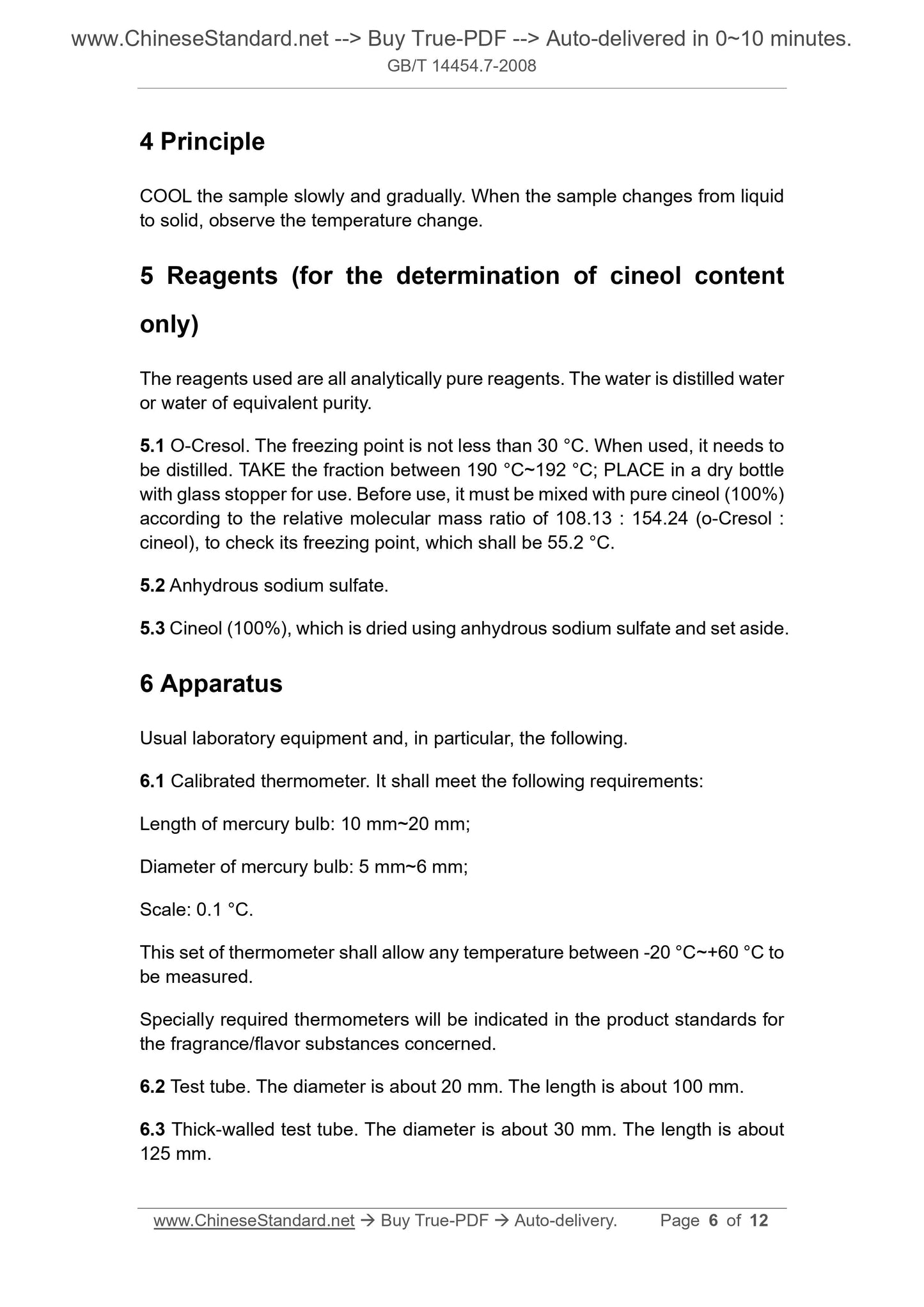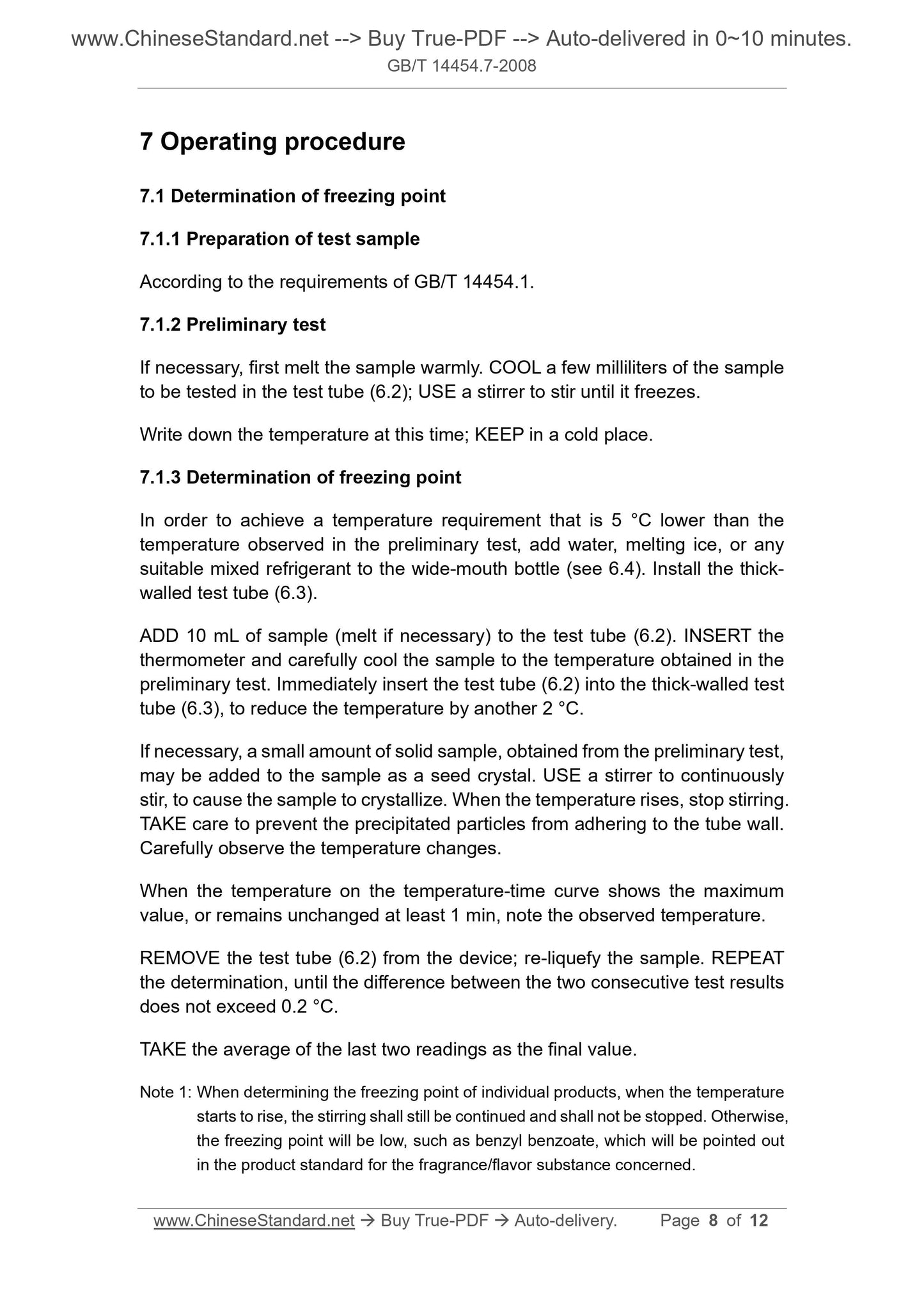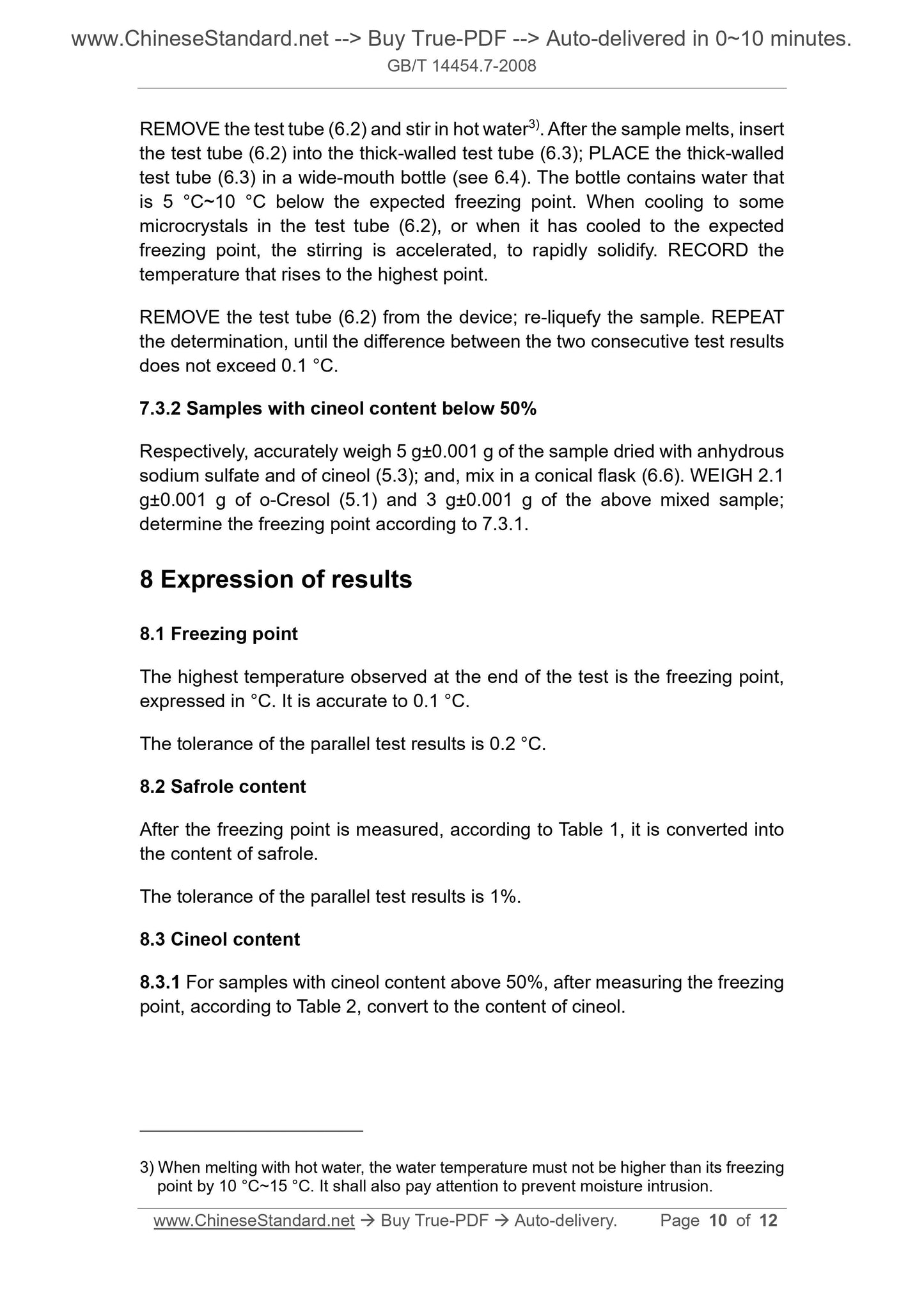1
/
of
6
www.ChineseStandard.us -- Field Test Asia Pte. Ltd.
GB/T 14454.7-2008 English PDF (GB/T14454.7-2008)
GB/T 14454.7-2008 English PDF (GB/T14454.7-2008)
Regular price
$150.00
Regular price
Sale price
$150.00
Unit price
/
per
Shipping calculated at checkout.
Couldn't load pickup availability
GB/T 14454.7-2008: Fragrance/Flavor substances -- Determination of freezing point
Delivery: 9 seconds. Download (and Email) true-PDF + Invoice.Get Quotation: Click GB/T 14454.7-2008 (Self-service in 1-minute)
Newer / historical versions: GB/T 14454.7-2008
Preview True-PDF
Scope
This Part of GB/T 14454 specifies the methods for determining the freezingpoint of fragrance/flavor substances, determining the content of safrole in
fragrance/flavor substances by freezing point method, and determining the
content of cineol in fragrance/flavor substances by o-Cresol freezing point
method.
This Part is applicable to the determination of the freezing point of
fragrance/flavor substances; as well as to the determination of the content of
safrole in essential oils and isolate fragrance/flavor substances with safrole
content above 69%, and the determination of the content of cineol in essential
oils and isolate fragrance/flavor substances with cineol content above 45.6%.
Basic Data
| Standard ID | GB/T 14454.7-2008 (GB/T14454.7-2008) |
| Description (Translated English) | Fragrance/Flavor substances -- Determination of freezing point |
| Sector / Industry | National Standard (Recommended) |
| Classification of Chinese Standard | Y41 |
| Classification of International Standard | 71.100.60 |
| Word Count Estimation | 8,829 |
| Date of Issue | 2008-07-15 |
| Date of Implementation | 2008-11-01 |
| Older Standard (superseded by this standard) | GB/T 14454.7-1993; GB/T 14454.8-1993; GB/T 14454.9-1993 |
| Quoted Standard | GB/T 14454.1 |
| Adopted Standard | ISO 1041-1973, MOD |
| Regulation (derived from) | National Standard Approval Announcement 2008 No.12 (Total No.125) |
| Issuing agency(ies) | General Administration of Quality Supervision, Inspection and Quarantine of the People's Republic of China, Standardization Administration of the People's Republic of China |
| Summary | This standard specifies the determination of spices freezing point, determination spices safrole content by freezing point method, spices Cineole method for determination of freezing point method using o-cresol. This section applies to the determination of spices freezing point. Also applies to oil and single determination safrole content of more than 69% from the spices and vasopressin content of the press and the single ion spices in oil Cineole Determination of safrole content of more than 45. 6% of the. |
Share
